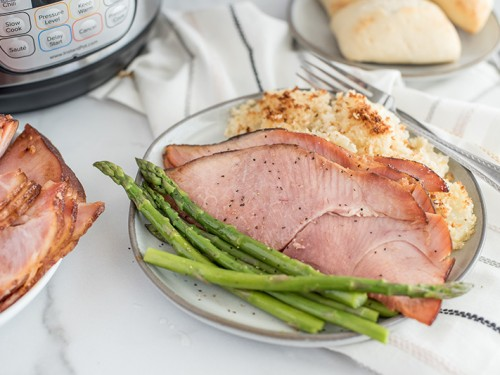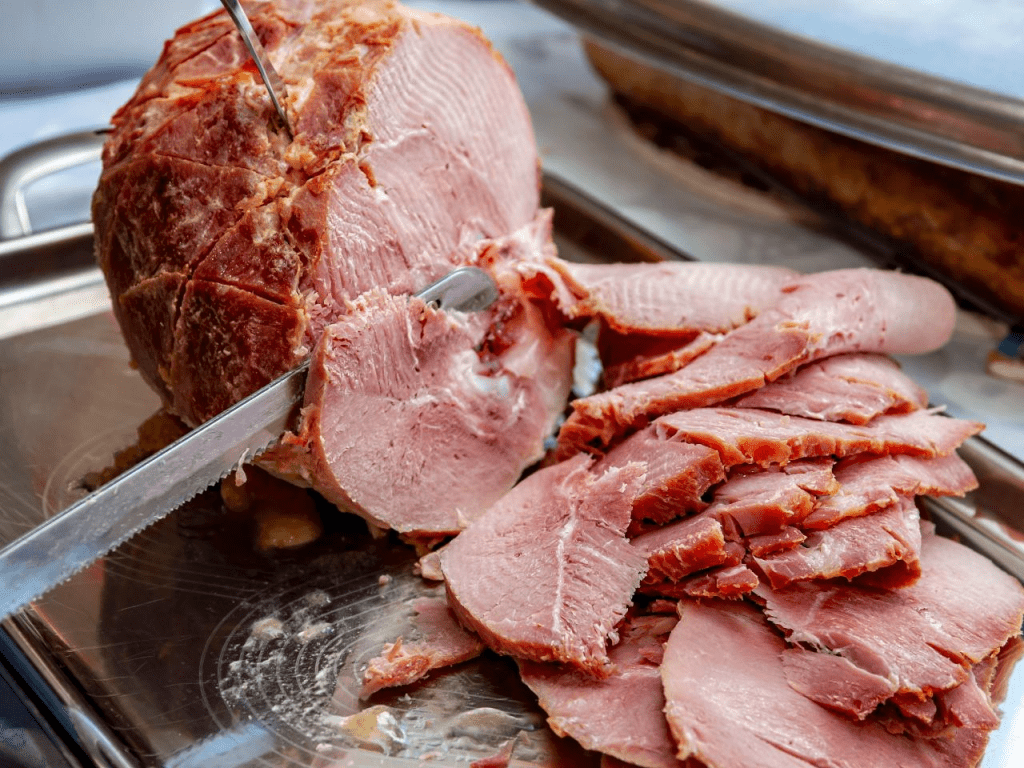Finding out that your hubby left a frozen ham on the counter for five days is more than just frustrating—it can also raise serious concerns about food safety. Meat is especially prone to bacterial contamination if it’s not handled and stored properly, and when food safety is compromised, so is your health. Let’s explore whether that ham is still safe to use and what you can do to prevent this situation in the future.
Spoiler alert: The short answer is no, it’s not safe, but let’s dive into the details of why.

Why Improper Meat Storage is Risky
Before you even consider saving the ham, it’s important to understand the dangers of leaving meat out at room temperature for an extended period. Ham, like other perishable foods, needs to be stored correctly to prevent the growth of harmful bacteria that can cause foodborne illnesses. Here’s a breakdown of the risks.
The Danger Zone for Food Safety
The most important factor here is the temperature danger zone, which refers to the temperature range between 40°F and 140°F (4°C to 60°C). When food like ham is left in this range for more than two hours, bacteria begin to multiply at a rapid rate. Leaving the ham out on the counter for five days means it’s been in the danger zone for far too long.
Bacteria like Salmonella and E. coli thrive in this temperature range, increasing the risk of foodborne illnesses. Unfortunately, once ham has been in the danger zone for an extended period, there’s no safe way to recover it.
Bacterial Growth and Food Poisoning
When ham sits at room temperature for five days, it becomes a breeding ground for bacteria such as Staphylococcus aureus, Salmonella, and Listeria. These bacteria can lead to food poisoning, with symptoms ranging from mild stomach discomfort to more severe complications such as nausea, vomiting, diarrhea, and fever.
The tricky part? You can’t always see or smell the bacteria. Even if the ham looks and smells fine, it could still be teeming with harmful pathogens.
Is It Safe to Eat Ham Left Out for 5 Days?
In a word: no. Leaving ham on the counter for five days makes it extremely unsafe to eat. Here’s why:
1. Exposure to the Danger Zone
Since the ham has been sitting in the temperature danger zone for five days, it has had plenty of time to accumulate dangerous bacteria. Even if you decide to cook the ham, it won’t guarantee safety. Some bacteria produce toxins that aren’t destroyed by heat, meaning the ham could still cause food poisoning even after cooking.
2. Visible Signs of Spoilage May Not Appear
It’s easy to assume that if food doesn’t look or smell bad, it’s still good to eat. But with meat that has been left out for days, this is not the case. Bacteria can multiply to dangerous levels without leaving obvious signs of spoilage. This makes eating the ham a risky gamble.
3. No Cooking Can Save It
You might be tempted to think that cooking the ham thoroughly will kill off any harmful bacteria. While cooking can destroy some types of bacteria, it won’t eliminate the toxins produced by bacteria that have already grown. Once the meat has spent too long in the danger zone, there’s simply no safe way to make it edible again.

Steps to Prevent Future Food Safety Mishaps
While the current situation may be frustrating, it’s also an opportunity to educate yourself (and your hubby) about proper food handling and storage practices. Here are some preventive measures to avoid a similar situation in the future.
1. Refrigerate Meat Promptly
As a general rule, perishable food should not be left at room temperature for more than two hours. Make sure you refrigerate or freeze meat as soon as possible after it’s done cooking or thawing. A good tip is to set your refrigerator to 40°F (4°C) or below and your freezer to 0°F (-18°C) or below to ensure proper food preservation.
2. Properly Thaw Frozen Meat
One of the biggest mistakes people make is thawing meat on the counter. The best way to thaw frozen meat is to move it to the refrigerator, where it can safely defrost at a controlled temperature. If you need to thaw meat quickly, you can use the microwave or place it in cold water, but leaving it out on the counter is a major no-no.

3. Label and Date Food Items
If you’re ever in doubt about how long meat has been sitting out, labeling and dating perishable items is a great solution. This will help you keep track of when food was last handled and ensure that you use it within the safe time frame.
4. Educate Family Members on Food Safety
Sometimes, accidents happen simply because not everyone in the household understands proper food storage techniques. A quick conversation with your hubby (or anyone else in your home) about the importance of food safety could prevent situations like this in the future. Encourage your family to prioritize health by following basic food storage guidelines.
When in Doubt, Throw It Out
If you’re still on the fence about whether the ham is salvageable, it’s time to follow the golden rule of food safety: when in doubt, throw it out. It’s never worth risking your health, or the health of your family, over questionable food. The cost of a new ham is much lower than the cost of a trip to the emergency room!
Conclusion: The Ham Has to Go
In conclusion, ham that has been left out on the counter for five days is absolutely not safe to eat. It’s been sitting in the temperature danger zone for too long, allowing harmful bacteria to multiply. Even if it looks fine and smells okay, the risk of foodborne illness is far too high to ignore. The best thing to do is to throw the ham away and move forward with a few food safety practices to prevent this from happening again.
Remember, your health is the most important thing. So next time, make sure to store food properly and avoid the hassle (and worry) altogether!


